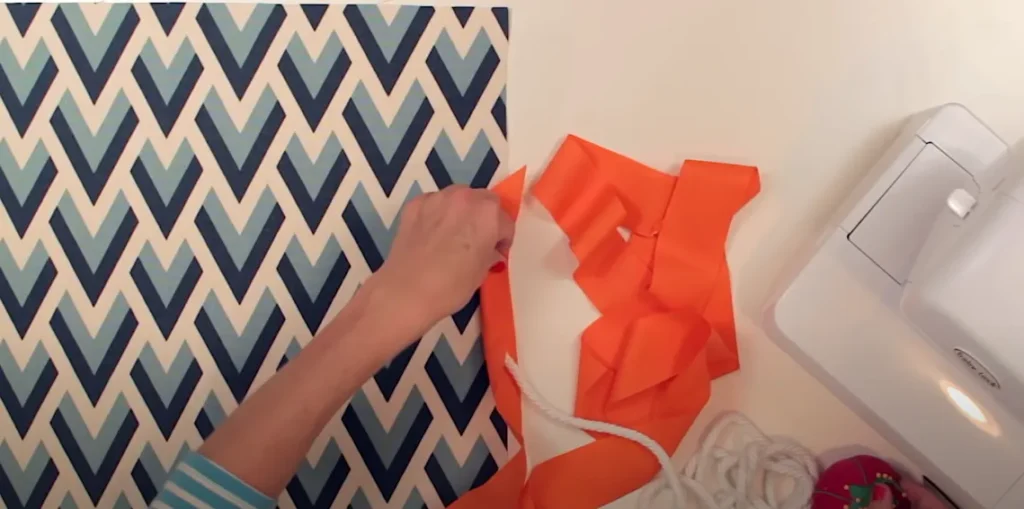Manufacturing pillows for sale in the increasing trend of decoration, luxurious sleeping, and comfort is a good idea for building a successful business.
With a production line, you can also start with online, wholesale, retail, pillow designing, or printing business ideas; however, focusing on a particular business model is ideal.
By starting a pillow business, you can sell different types of pillows, such as memory foam pillows, down pillows, body pillows, and more, in various sizes and shapes.
You can easily target different markets, such as luxury pillows for high-end hotels or therapeutic pillows for people with medical conditions, normal pillows for bedding, and home decor items, such as bed sheets, duvet covers, and throws.
Let’s discuss the steps to get started.
How to start a pillow business?

1. Market research and planning
When you are starting a pillow business, the first step is to understand the market and analyze it thoroughly so that you will know about customer intent, market demand, competition, and product pricing.
Focus on making the product according to the needs of the market; you can create decorative pillows, custom-designed pillows, printed covers, etc.
Understand the market:
Having a good understanding of the target market is essential.
- Analyze the size and growth of the pillow market.
- Identify your target customer, their need, and their demographics.
- Analysis of your competitors, competition, and pricing
- Find out the best distribution channels (online, retail, or both)
- Setup competitive pricing according to the market price
- Prepare for manufacturing, decoration, printing, or packaging.
The global sleeping pillow market has been growing steadily in recent years, reaching a size of US$ 13.05 billion in 2021.
This growth is expected to continue, with the market projected to reach US$ 17.81 Billion by 2027, exhibiting a compound annual growth rate (CAGR) of 5.15% from 2022 to 2027.
This growth is increased according to the demand for comfortable and supportive sleeping pillows, raising awareness of the importance of getting a good night’s sleep.
| Industry Trend: | Growing | Growth Rate: | CAGR of 5.15% |
| Market Size In 2021: | USD 13.05 Billion | Source link: | Imarcgroup.com |
| Forecast Period: | 2022-2027 | Forecast Value: | USD 17.81 Billion |
Niche research:

There are many types of pillows available in the market, which look different and the raw material used in them is different, as well as the purpose of using them is also different.
So, the first thing you need to do is choose a niche. There are all sorts of pillows on the market, from body pillows to neck pillows to decorative pillows.
When selecting a niche must consider the given points:
- Focusing on the existing pillow market, popular materials, pricing ranges, and current trends, choose one.
- Identify potential nich focusing on demographics: Interests, hobbies, lifestyle, and sleep challenges of customers.
- Interest, market demand, customer needs, and select highly sold pillow categories.
- Understand the market competition, profitability, scalability, and growth.
- Choose custom, decorative, memory foam, organic, travel pillow, etc.
- Consider the material, size, color, sewing pattern, and designs.
Pillow niche ideas: Understand the different needs of the market and make pillows.
- Functional pillows: Sleep positions, pain relief, pregnancy, travel, cooling.
- Personalized: Names, photos, messages.
- Eco-friendly: Organic, sustainable, recycled.
- Luxury: Silk, cashmere, memory foam.
- Themed: Hobbies, teams, fandoms, cultures.
- Travel: Compact, portable.
- Medical: Allergies, sleep apnea.
2. Build a solid business plan
To become a successful entrepreneur, you need to have a proper understanding and information about the project, goals, strategies, and a clear timeline.
Creating a strategic business plan is an essential part of becoming successful; you not only need to write a plan for your pillow business but also outline all the basic requirements.
Before writing a plan, you have to decide what type of Pillow you want to sell, its material, startup cost, market demand, and the trend of buyers.
A Pillow manufacturing business plan is a detailed plan that includes all the steps that need to be taken to step the manufacturing line.
Which is the roadmap and guide for the business to launch and operate a pillow production line.

What should be included in a pillow business plan:
- Business Summary: A summary of the business related to product offering, value addition in the industry, commitment to best service, and every point of the business operation.
- Research: Write a clear research plan on industry trends, growth, customers, and competition (strength, weakness, and pricing), identify potential gaps in the market, and focus on different age groups.
- Define your product: Before making a pillow, having a clear description of the product is important, including pillow sizes, filling types, patterns, features, materials, etc.
- Business model: Describe your business model – how you want to run the startup line, such as manufacturing pillows, selling online, wholesale, or through a physical store.
- Marketing plan: Create a proper making plan including digital or offline strategies (social media, paid advertising, content, SEO, website, – online) and (local partnerships, influencer collaboration, trade shows, promoting community events, etc. – offline).
- Financial plan: Making a financial plan is a must before arranging funds, so list all types of expenses, including inventory, production supplies, staffing, marketing costs, legal fees, and ongoing expenses.
- Business requirements: Making supplies (equipment, tools, raw material), workforce for production, legal requirements (licensing, registration, taxation, fulfilling local regulations, etc).
This is just the overview of writing a business plan.
Search online to find more useful information (Small business administration, Bplans, LivePlan, BizPlanBuilder) are the best sources where you can find pre-made templates.
3. Come up with a business name
When it comes to creating branding for a product line, brainstorming a business name is necessary, no matter the business model (online or offline); having a professional name gives an identity in the competitive market.
Here are some reasons why having a name is important:
- First impressions
- Brand identity
- Marketing and advertising
- Building trust
- Stand out from crowded
- Explain the product
- Memorability
Choose a unique, attractive, related pillow, memorable, user-friendly, web-friendly, copyright-free, easy to spell, and pronounceable name for branding.
Also, focus on your target market before selecting; you can use a business name generator tool to find unique names. Ask your families and friends, and follow other industry-related businesses to get some ideas.
A great way to come up with a new name for your pillow business is to brainstorm some ideas; here are some name ideas we listed that you can follow.
Pillow business name ideas:
- Pillow Paradise
- The Pillow Lab
- Luxe Pillows
- Plush Dream
- Pillow Fantasia
- Homey Pillows
- Sensational Pillow
- Pillow and Stuff
- Sleepology
- Heavenly Pillows
- Serene Sleep
- Layback Pillows
- Sweet Dreams
For finding this attractive, niche-relevant, and unique name idea, we used a business name generator tool; you can also use this. Generating a name is simple – just put the key term and click on “generate.”

4. Legalities- license and permits
Starting a pillow business requires some legal requirements, more than just designing and manufacturing quality pillows.
You must ensure that you comply with all legal requirements to avoid lawsuits and other legal issues.
According to the rules and regulations of local government and state, you need to register your business, as well as apply for necessary licenses and permits.
Every state has different requirements; that’s why taking advice from a legal attorney is important.
The legal requirements depend on:
- Your business location – Country, State/province (differ by state)
- Your business type (sole proprietorship, LLC, or corporation)
- Home-based or commercial location
- Pillow type and target audience
The given points are important to consider for legalities, so before obtaining, research on those factors.
The general or common legal needs are:
- Choose and register your business name.
- Obtain a Federal tax ID number (EIN) in the US.
- Register with your state – for taxes.
- Licenses and permits
- Product safety and labeling
- Business insurance coverage
Resources:
- US Small Business Administration (SBA)
- CPSC: https://www.cpsc.gov/
- SCORE (offers free business mentoring)
Additionally, you should have a thorough understanding of consumer protection laws and regulations to ensure your products meet the necessary standards and labeling requirements.
Consult an attorney to help you in reviewing legal documents, such as partnership agreements, employment agreements, and terms of sale.
5. Estimate the startup budget
Making Pillow requires a dedicated workspace, raw materials, equipment, staff, etc.
Also, there are many operational activities included in the business, which is why having a financial calculation or estimation of the startup cost is the most crucial step.
Estimate both initial and operational expenses to make a perfect financial plan.
| Initial Expenses | Ongoing Expenses |
|---|---|
| Equipment (sewing machine, heat press, etc.) | Rent or mortgage for studio/workspace |
| Fabric and filling inventory | Utilities (electricity, water, internet) |
| Website development and design | Equipment maintenance and repairs |
| Marketing and branding materials | Fabric and filling supplies |
| Business licenses and permits | Packaging and branding materials |
| Legal and accounting fees | Marketing and advertising costs |
| Insurance | Website and e-commerce platform fees |
| Inventory management software | Staffing salaries |
| Insurance and Taxes |
Startup costs depend on the following:
Business model:
- Handmade Pillow (hand-sew, fabric, sewing material, basic tools, and raw material)
- Custom printing: Heat press, sublimation printing material, bulk pillows, and other needs).
Scale and production:
- Starting small: start from home, can manage yourself, and have low production costs.
- Large-scale production: Rental cost, hiring staff, expensive machinery, and utilities.
Types of material:
- Fabric and filling: depend on quality, luxurious, or natural.
Marketing and sales:
- Online store: cost for building an e-commerce website (platform fees, domain, etc.).
- Physical store: Renting a retail space, overhead costs
Consider the given factors when you estimate the startup budget, start from basic (small scale), and expand the business size with growth.
6. Setup a dedicated workspace

You need some space to set up the manufacturing unit for making pillows.
When you are starting a pillow business, you should know how much space will be required, where the raw materials and machines will be kept, and also the manufacturing process.
You will need at least 500-1000 square feet of space to start a pillow-making business, depending on the machine and business scale (large scale/small scale).
How much space is needed depends on (production volume, number of machines, and inventory setup).
- First, find out your needs for the space requirements or facilities.
- Select a good location: Easy access, electric and transportation facility, and supply availability areas.
- Space requirements: For production, storage, packaging, operations, and setting up stores.
- Must consider: Zoning regulation, cost, infrastructure setup, and future expansion.
7. Source material and supplies
Source the high-quality raw materials, supplies, equipment, and tools for making pillows.
Consider purchasing from wholesalers or manufacturers to ensure competitive pricing.
Don’t forget to explore eco-friendly options and stay updated with the latest trends in pillow-making materials. Proper sourcing will help you create pillows that stand out in the market.
- Research on material quality
- Identify reliable supplier
You can buy some modern pillow-making machines that will do your job easily and in less time, which can include many types of Machines.
Focus on quality, and also buy in large quantities to get more discounts.
Supplies:
- Pillow-filling materials such as down, feathers, foam, and polyester fiber
- Fabric and textiles for pillow covers
- Zippers, buttons, and other fasteners
- Thread, needles, and other sewing notions
- Labels, tags, and packaging materials.
Equipment:
- Sewing machines and sergers
- Cutting tables and fabric cutters
- Printing and labeling equipment
- Packaging and shipping equipment
Sewing Machine
Filling Material
Sewing Table
Raw Material for Making Pillows:
- Filling:
- Polyester
- Feathers
- Down
- Memory foam
- Latex
- Cover:
- Cotton
- Linen
- Silk
- Polyester
The given list of supplies and equipment is only basic; don’t buy anything before creating a proper production plan. Before purchasing, create a proper list of all essential and only required supplies.
8. Learn the designing skills
Pillow-making is creative skills-based and requires designing work.
Develop your skill set to improve productivity, performance, and overall growth. Starting a pillow business – requires skills such as:
- Technical skills: Sewing, measuring and installations, fabric knowledge, matching fabric lengths.
- Creative skills: Interior design, problem-solving, marketing, and sales.
- Other skills: Communication, time management, customer service, computer skills, business management, etc.
Start from understanding the fundamentals, with practice and day-by-day operation; skills will improve with time.
Work both hard work and smart work, and follow your passion, interest, and creativity.
Understand the pillow functionality, sizes, and other needs before making.
- Sleeping position: (back sleepers, side sleepers, stomach sleepers)
- Pillow for: (body, wedge, neck, etc.)
- Purpose: (for sleeping, travel, decoration, pregnancy and lumbar Support)
- Know the filling type: (cotton, wool, feather)
You can make pillows with different sizes:
- Standard: 20” x 26”
- Queen: 20” x 30”
- King: 20” x 36”
- Euro: 26” x 26”
Pillow-Making Process (basic steps for your idea)
So, let’s discuss the process of making a pillow and its requirements:
Gather material and tools: For making a variety of Pillow you need to buy different types of fabric (cotton, polyester, linen, silk, etc.), stuffing (polyester fiberfill, foam, or feathers), also the equipment needed (sewing machine, thread, scissors, ruler, and pins).
Cut fabric: Decide the best size, and then cut two identical pieces of fabric, leaving extra allowance for seams (usually 1/2 inch).

Pin the fabric: Place the two fabric pieces together, with the right sides facing each other. Pin the edges to keep them aligned during sewing.

Sew the fabric: Using a sewing machine, stitch around the edges of the fabric, leaving a small opening (about 4-5 inches) on one side.

Trim excess fabric: Trim any excess fabric from the edges, especially at the corners, to reduce bulkiness when you turn the pillow right-side out.

Turn the pillow right-side out: Reach through the opening and gently pull the fabric through to turn the pillow right-side out. Use a pen or similar object to push out the corners for a neat shape.

Stuff the Pillow: Fill the Pillow with your chosen stuffing material through the opening. Adjust the amount of stuffing to achieve your desired level of firmness.

Hand-sew the opening: Fold the edges of the opening inward and use a needle and thread to hand-sew it closed neatly.
Final touches: Give the Pillow a gentle shake to distribute the stuffing evenly and ensure it looks well-filled.
Packaging: Once the Pillow is complete, consider packaging it in a plastic bag or wrapping it in tissue paper to protect it during transportation or storage.
The given steps are only the basics of cutting, sewing, and preparing the pillow. Depending on pillow type, and production size, you can use automatic machinery and tools.
9. Marketing and selling
To promote your pillow products, a strong online presence, good activity on social media profiles or pages, and focusing on online selling are important.
The best promotional strategies in the current scenario are social media marketing, website, content marketing, SEO, online advertising, influencer marketing, etc.
- Social media
- Email marketing
- Targeted ads
- Collaborations
- Content marketing
Promote on social media:
To promote your products on social media, use quality images, videos, visual content, and infographics to attract them to your online store.
The best social media platforms are (Facebook, Instagram, TikTok, YouTube, Pinterest, etc).
Setup a website:
You will need to set up your website or blog where customers can promote your products.
Your website should have information about the company, product, pricing, features, etc.
Start paid advertising:
When you are ready to advertise, it is important to create a marketing plan that outlines what types of advertisements you will use.
You could use Facebook ads or Google AdWords, which allow you to target specific demographics based on age, gender, and location, as well as keywords that might trigger interest.
Different sales channels:
- Online store
- Etsy
- Wholesale
- Local markets
10. How to sell pillows online

Before selling pillows online, some basic things you need to know, such as (your target audience, the best platform for selling online, and its process).
The process of selling pillows online:
- Choose an E-commerce platform (Squarespace, Shopify, Square, Wix).
- Build your e-commerce website/store.
- Prepare your product with great packaging.
- Take high-quality pictures of your pillows.
- Write the product description and features.
- Price your pillows competitively.
- Finally, Promote your online store.
To sell any product in the market, identifying the target customer is important; find out who will buy your product in bulk or individually.
Target customers for pillows:
- All types of individuals who are seeking better sleep
- People are experiencing neck or back pain.
- Pregnant women are seeking support during pregnancy.
- Travelers in need of portable travel pillows.
- Side, back, or stomach sleepers with specific pillow needs.
- Customers are looking for specialty pillows.
- Anyone who wants to upgrade their current Pillow for improved sleep quality.
- Target all ages of customers with different demographics
Where to sell your pillows (platforms):
Online Platforms:
- E-commerce Marketplaces:
- Amazon, eBay, Etsy
- Shopify: Create your online store with full control.
- Craft & Artisan Marketplaces:
- Etsy, Made by Hand, Folksy
- Social Media & Local Marketplaces:
- Instagram, Facebook Marketplace
- Wholesale Platforms:
- Faire, Handshake: Connect with retailers interested in buying your pillows in bulk.
Online selling is not the only way, you can sell your products offline as a wall.
Offline Platforms:
- Brick-and-mortar stores:
- Home decor stores, furniture stores, specialty bedding stores
- Craft fairs and markets
- Consignment shops
- Sell directly to customers offline.
Pros and cons of the business:
Pros: High demand, low startup costs, potential for high profit, creative freedom, easy to manufacture, scalable.
Cons: Competitive market, thin margins, inventory management challenges, marketing costs, seasonality, shipping logistics.
Hopefully, the guide is helpful and informative; still, if you have other doubts related to the pillow business, then ask in the comment section.
Related blog post:
Frequently Asked Questions (FAQs)
How big is the pillow industry?
According to a Statista.com report, the global sleep pillow market size was valued at $15.6 billion in 2019 and is growing rapidly with a CAGR of 3%.
Can you make money selling pillows?
Yes, you can make a good income by selling pillows.
How much does it cost to make a custom pillow?
Making a custom pillow can range from $20 for DIY fabrics to $100+ for designer materials and professional sewing.
What Is The Most Popular Pillow Size?
The most popular and standard pillow size is 20” x 26” Inches.








